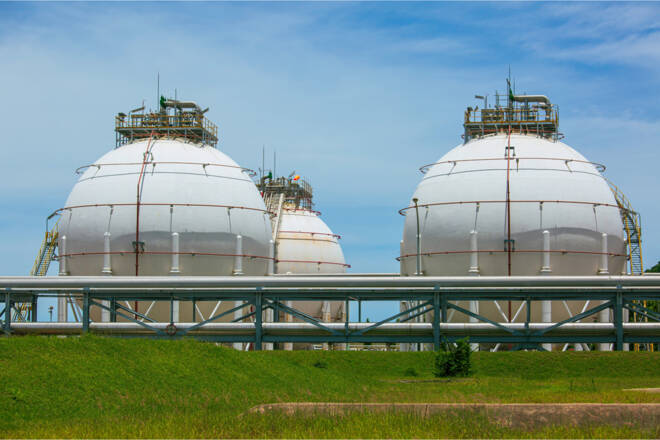Advertisement
Advertisement
Natural Gas Trading at 3-Year Low Ahead of April Futures Expiration
By:
April natural gas futures are set to expire on Wednesday, and trading during the expiry period is often volatile.
Key Takeaways
- Multiple Factors Contribute to Bearish Price Action in Natural Gas
- Steady Production and Reduced Demand Forecasts Weigh
- Analysts Predict Potentially Bullish EIA Storage Report for 2nd Consecutive Week
Overview
Natural gas futures are inching lower on Wednesday, hovering just above a 3-year low, despite reports of a rise in flows to the Freeport LNG export plant in Texas.
At 12:15 GMT, May natural gas futures are trading $2.130, down $0.017 or -0.79%. On Tuesday, the United States Natural Gas Fund ETF (UNG) settled at $6.83, down $0.24 or -3.40%.
Multiple Factors Contribute to Bearish Price Action in Natural Gas, Including Steady Production and Reduced Demand Forecasts
The current bearish price action in natural gas is being influenced by a combination of factors.
Firstly, production levels have remained above 100 Bcf/d, which is on par with recent peak levels, indicating a steady supply of natural gas.
Secondly, the National Weather Service has forecasted warmer conditions across the South and in some northern markets late this week and next, which is likely to reduce demand for natural gas.
Additionally, heavy end-of-season natural gas supplies and little weather have led to Nymex natural gas bears taking money off the table before the end of the quarter.
Furthermore, the April contract is set to expire on Wednesday, and trading during the expiry period is often choppy.
However, there is a chance that the roll to the May contract could save natural gas from sliding further if May futures can maintain their value until after expiration.
Analysts Predict Potentially Bullish EIA Storage Report for Second Consecutive Week
Analysts are expecting another potentially bullish U.S. Energy Information Administration (EIA) storage report for the week ending March 24, following a brief spell of late-winter weather in mid-March. Early estimates suggest a draw of 55-57 Bcf, compared to the five-year average decline of 17 Bcf.
Despite the anticipated drawdown, inventories still remain high at 1,900 Bcf, far above the year-earlier level and the five-year average. The surpluses are unlikely to be significantly impacted by late-season storage pulls.
Freeport LNG’s Texas Plant to Hit Record Feedgas Intake, Starting Third Liquefaction Train
Freeport LNG’s export plant in Texas is set to receive its highest amount of natural gas since its shutdown in June 2022. The plant has been gradually increasing its feedgas intake since February and is expected to hit 1.8 billion cubic feet per day on Wednesday, indicating the start of the third liquefaction train.
Daily May Natural Gas Technical Analysis
The main trend is down according to the daily swing chart. The main trend will change to up on a trade through $2.789. With the market currently trading $2.126, the trend is decisively bearish.
Daily May Natural Gas Technical Forecast
Trader reaction to $2.147 will set the tone today. A close over this level will form a closing price reversal bottom. If confirmed then look for the start of a 2-3 day counter-trend rally.
For a look at all of today’s economic events, check out our economic calendar.
About the Author
James Hyerczykauthor
James Hyerczyk is a U.S. based seasoned technical analyst and educator with over 40 years of experience in market analysis and trading, specializing in chart patterns and price movement. He is the author of two books on technical analysis and has a background in both futures and stock markets.
Did you find this article useful?
Latest news and analysis
Advertisement
